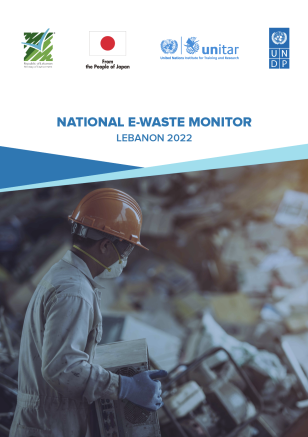National E-waste Monitor - Lebanon 2022

National E-waste Monitor - Lebanon 2022
June 16, 2022
This report examines the overall statistics of electronic and electrical equipment (EEE) placed on the market (POM), the national stock and its subsequent e-waste generation, its disposal routes, and e-waste collection for environmentally sound management. The main findings are that 63 kt EEE were placed on the market in Lebanon in 2021, entering the stock of households and businesses. The total stock of EEE in Lebanon in 2021 is calculated at 659 kt.
Once devices are broken or unused, the household survey suggests that repair and donation are the predominant intentions of Lebanese households, which is likely to extend the lifespan of the EEE. In 2021, 46 kt of e-waste was discarded from the stock and became e-waste. Once discarded, waste management infrastructure is lacking, and e-waste ends up with the municipal solid waste or is collected by the informal sector. As a result, of the 46 kt e-waste generation in 2021 only 0.09 kt was documented by two e-waste national dismantling entities in Lebanon to have been managed in an environmentally sound manner.
The statistical data can be used for national purposes to plan the number and the capacity of e-waste collection points and e-waste pre-treatment facilities, as well as for the financial planning of recycling fees and the setting of national collection targets to ensure that all e-waste will be properly managed.
The statistical data can also be used for international reporting needs under Sustainable Development Goal 12 on sustainable consumption and production.
It is very likely that the vast majority of e-waste is not managed in an environmentally sound manner. It might be that some cherry picking of valuable components is happening and that remaining materials are then dumped, or that entire devices are ending up in sanitary landfills or open dumpsites. This poses a risk to the environment and to the safety of workers, as e-waste contains hazardous materials that need to be separately and adequately managed. Calculations show that 71 kg of mercury, 81 t of lead and 63 t of polybrominated diphenyl ethers were added to the Lebanese e-waste stream in 2021. In addition, managing e-waste is an economic opportunity, as e-waste contains valuable materials, such as 19.5 kt iron and 2.5 kt Aluminium in 2021. To improve e-waste management in Lebanon, several practical steps need to be undertaken.

 Locations
Locations